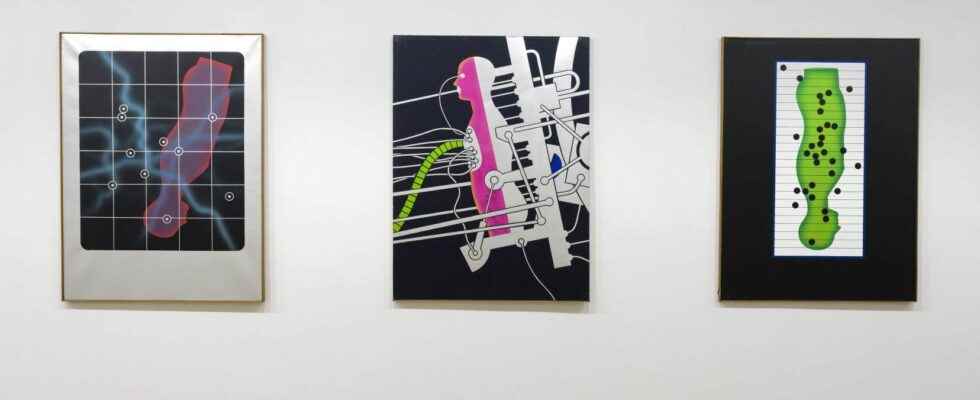In 1967, Edmund Alleyn presented his exhibition Conditioning, initially from April 26 to May 23, at Galerie Blumenthal-Mommaton in Paris, then from October 3 to 24, at Galerie Soixante in Montreal. The French critic Gérald Gassiot-Talabot — who the same year founded the art review OPUS International — signed the presentation text accompanied by a poem by Michel Butor. The whole thing formed a pamphlet with color photos, a little work which — by the way — is sorely lacking these days in contemporary art galleries. But, what do you want, rare are the visitors who, today, in commercial galleries, read about art. The question for buyers is more how much is it worth and how much will it be worth, not what is it about…
Between 1965 and 1970, Alleyn was then in a technological period. To the critic Yves Robillard, he confided that after having worked on an “Indian mythology” – a series produced between 1962 and 1964 – he wanted to invest in a “more modern mythology”. He showed how man is invaded by the machine. Gassiot-Talabot explained that his diagrams showing individuals devoured by various instruments, probes, prostheses tell us of “a violation of man in his body and in his consciousness”. Like what the idea of the alienation of humans by technology does not date from the invention of the Internet or the smartphone, as some repeat ad nauseam, without thinking ! And at the time, we could already have explained that this idea dated at least from the 19th century.e century, if not of the Renaissance, when intellectual reflection was opposed to the mechanical work of craftsmen, slaves of matter. This series maintains links with pop art, but also with what Gassiot-Talabot called “narrative figuration”, an art that is more clearly protesting than the Anglo-Saxon movement.
And the amateur will be able to judge this rich period of Alleyn’s art thanks to an exhibition entitled Tech diagrams (1966-1967) featured these days. An opus of contemporary works by the famous Introscape that Alleyn built between 1968 and 1970, the first immersive multimedia creation in Canada, which was also exhibited in Paris and Montreal.
Michael Merrill
For his most recent series of oils on canvas, executed in 2022, Michael Merrill gave himself a constraint. Each of them was made in a single day in his studio. It must be said that this is not the first time that Merrill has painted with the intensity of the moment. In fact, his work often oscillates between methodical and patient work carried out over the long term – sometimes in connection with photographs – and creation executed in a more spontaneous way, on the spot… The amateur will remember, among other things, his works presented in the same gallery in 2016, works in which Merrill had represented major places of land art in the United States. He had painted these sites “on the motif”, in a very short time, in the desert, with a certain urgency, while the outside temperature was very high…
Here, Merrill carries out a kind of sociological study of his studio, which could be that of many artists. The artist explains that “the act of making art is the subject” of this series. In his oils, we find images of the works of Picasso, Goya, Géricault, but also African statues and various commercial products or functional objects that he has in his workplace. There are often surprising formal correspondences between these different elements that do not have the same symbolic function. Referring to Giacometti, Merrill speaks of the fact that “the act of perceiving the world becomes the very subject of the work”. Thus, he brilliantly manages to challenge us on a fundamental question: what differentiates art from what is not? And the explanation does not come only from the sociological context. He gives as proof of this a trip he made in 2013 to see rock art. Despite the fact that “we are not quite sure of their function, these works still touch us completely”, concludes the artist.
